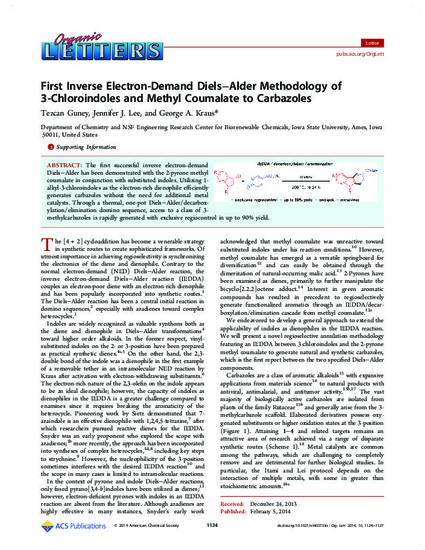
Article
First Inverse Electron-Demand Diels–Alder Methodology of 3-Chloroindoles and Methyl Coumalate to Carbazoles
Organic Letters
Document Type
Article
Disciplines
Publication Version
Published Version
Publication Date
2-5-2014
DOI
10.1021/ol403733n
Abstract
The first successful inverse electron-demand Diels–Alder has been demonstrated with the 2-pyrone methyl coumalate in conjunction with substituted indoles. Utilizing 1-alkyl-3-chloroindoles as the electron-rich dienophile efficiently generates carbazoles without the need for additional metal catalysts. Through a thermal, one-pot Diels–Alder/decarboxylation/elimination domino sequence, access to a class of 3-methylcarbazoles is rapidly generated with exclusive regiocontrol in up to 90% yield.
Copyright Owner
American Chemical Society
Copyright Date
2014
Language
en
File Format
application/pdf
Citation Information
Tezcan Guney, Jennifer J. Lee and George A. Kraus. "First Inverse Electron-Demand Diels–Alder Methodology of 3-Chloroindoles and Methyl Coumalate to Carbazoles" Organic Letters Vol. 16 Iss. 4 (2014) p. 1124 - 1127 Available at: http://works.bepress.com/george_kraus/63/

Reprinted (adapted) with permission from Organic Letters, 16(4); 1124-1127. Doi: 10.1021/ol403733n. Copyright 2014 American Chemical Society.